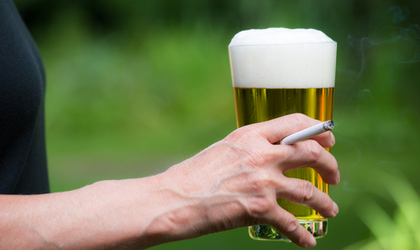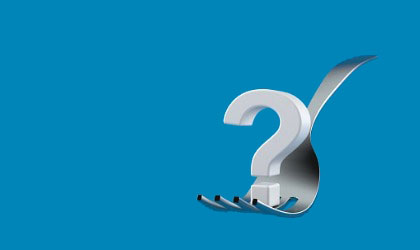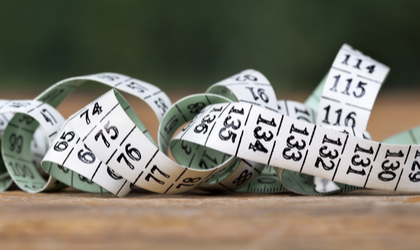
Just like any other area of your body, it doesn’t take a lot to please your bones. All they ask for is TLC in the form of a colourful, varied diet, plenty of exercise, and small doses of sunshine. Pretty easy, right? Well, you’d think so, but it turns out there are a number of lifestyle habits that can severely sabotage your bone-bolstering efforts. So, if you truly want to prioritise your bone health, it’s time to wash your hands of the following vices.
Under-eating
What do long-distance runners, gymnasts, dancers, yo-yo dieters, and those with bulimia or anorexia all have in common? They’re all more likely to develop bone ailments than the general population. Why? Quite simply because their often insufficient nutrient intakes and low body fat levels can leave them susceptible to brittle, weak bones. In one study, female participants followed a 925-calorie-a-day diet and experienced considerable bone loss, despite following a resistance-training programmei. These unhealthy habits can even result in amenorrhea (when menstruation ceases), which signals levels of oestrogen have dropped to those of a postmenopausal woman. Because oestrogen is essential for the development of healthy bones, a dearth of it can result in a woman losing bone mass. Your best bet for protecting bones is maintaining a healthy, stable weight.
Smoking
The notion that smoking is downright terrible for health isn’t anything new. Besides wreaking havoc with your heart, lungs, eyes, and much more, your bones will suffer at the hands of cigarettes, too. In a landmark study, researchers revealed that one in 8 hip fractures may result from cigarette smokingii. This fiercely addictive habit is also thought to render bones more prone to fractures, as well as skew the production of oestrogen in women, which can lead to increased bone loss. Stubbing out smoking is by far one of the best things you can do for bone health – and the rest of your body, for that matter. If you could see the damage it does to your bones, you’d stop pronto. To find the best way to quit, head to the NHS website.
Drinking too much java
Tired and bleary-eyed, many of us reach for a cuppa joe first thing in the morning. And while it’s generally agreed that one or two mugs are okay, researchers have linked excessive caffeine intake – that is, more than six cups of coffee a day – with poor bone health. A study in the American Journal of Clinical Nutrition proposed individuals who zealously gulped down coke cola excreted calcium in their urineiii. However, tea – despite being caffeinated – doesn’t seem to fit this model. In yet another study published by the American Journal of Clinical Nutrition, elderly tea drinkers appeared to have stronger bones than their non-tea-drinking counterpartsiv. Researchers believed the presence of flavonoids (powerful antioxidants) and fluoride (an important mineral for bone health) promoted bone density. The drop of milk in each cup was sure to help, too. The verdict: replace your third cup of coffee with a milky bone-supporting brew.
Downing the fizzy drinks
Besides java, you can add fizzy drinks to the list of contraband. Guzzling fizzy drinks is thought to weaken bones thanks to their carbon dioxide content, which adds acidity to the beverages. When acid enters your bloodstream, the body tries to neutralise it with the alkaline bone-supporting mineral, calcium. In a study of 400 schoolgirls, researchers found one in five fizzy drink lovers had experienced bone fractures by the age of 20v. The phosphorous content of the beverages was blamed; it tilts the delicate status quo of minerals in the body, most notably causing calcium to disintegrate. If you can’t get enough of the sparkling stuff, try swapping your favourite fizzy drink for juice or, better still, water with fresh fruit and veggies. Top tip: cucumber and lemon are a dream team when it comes to pimping up your H20.
Going OTT on the tipples
Excessive alcohol consumption completes the trio of beverages that are bad for your bones. Going OTT on the tipples interferes with the calcium status quo in the body, which is vitally important for sustaining healthy bones. To make matters worse, drinking to excess can also negatively affect the production of vitamin D – another bone-building nutrient that supports the absorption of calcium. In one study, researchers found women, aged between 67 and 90, who consumed more than six drinks per day experienced greater bone loss than their female counterparts who drank minimallyvi. Be mindful the National Drinking Guidelines advise men and women to drink no more than 14 units per week. In addition to this, why not use smaller glasses for your tipples, too? Your bones (and head) will thank you for it.
Not moving enough
They say sitting is the new smoking, which is pretty spot-on when it comes to bone health. Leading a primarily sedentary life won’t only impact your waistline, wellbeing, and circulatory health, but it will also harm your bones. Of all the exercise styles, it’s weight-bearing activity you should focus on the most (strength training and flexibility come into the equation, too, but weight-bearing is the numero uno for bones). Running, brisk walking, dancing, or higher impact sports like squash, football, and tennis will work wonders for your bones. In fact, a study of 15,000 walkers and 75,000 runners found the latter were half as likely to suffer from arthritis than the formervii. Even if you’re prone to bone fracture, you can and should perform regular exercise. Moving more really doesn’t need to be a chore: cycle to work, join a dance class with friends, or go hiking at the weekend. Chances are, you’ll feel great and your bones will be in ship shape, too. Discover all you need to know about exercising for bone health here.
Not eating enough calcium and vitamin D
Many of us are taught from childhood that calcium builds strong, healthy bones. And while this is true, it’s only half the story. Yes, you need calcium to support bones, but you also need vitamin D to support the absorption of calcium. Together, these two nutrients are the shining nutritional stars of bone health. Remember, calcium-rich foods extend beyond the traditional milk and cheese. Nuts, seeds, chickpeas, green leafy veggies, figs, and canned fish (sardines, salmon, and tuna) are also teeming with the mineral. As far as a vitamin D – or rather the ‘sunshine nutrient’ – is concerned, look to the sky. When the skin is exposed to direct sunlight, the body is able to synthesize vitamin D3. Of course, the sun’s beaming rays aren’t so readily available in winter months, so be sure to cram more vitamin-D rich eggs, cheese, and oily fish into your diet. Don’t forget a high-strength vitamin D supplement is a simple way to plug any nutritional gaps, too. Bone up on your bone nutrition here.
References:
-
Andersen. R., Wadden. T. & Herzog. R. (1997). Changes in bone mineral content in obese dieting women. Metabolism. 46(8), 857-861.
-
Law. M.R., Hackshaw. A.K. (1997). A meta-analysis of cigarette smoking, bone mineral density and risk of hip fracture: recognition of a major effect. BMJ. 315:841-6.
-
Tucker. K., Morita. K., Qiao. N., Hannan. M., Cupples. L. & Kiel. D. (2006). Colas, but not other carbonated beverages, are associated with low bone mineral density in older women: The Framingham Osteoporosis Study. The American Journal of Clinical Nutrition. 84(4), 936-942.
-
Devine. A., Hodgson. J., Dick. I. & Prince. R. (2007). Tea drinking is associated with benefits on bone density in older women. The American Journal of Clinical Nutrition. 86(4), 1243-1247.
-
Wyshak. G. (2000). Teenaged Girls, Carbonated Beverage Consumption, and Bone Fractures. Archives of Pediatrics & Adolescent Medicine. 154(6), 610.
-
Hannan. M., Felson. D., Dawson-Hughes. B., Tucker. K., Cupples. L., Wilson. P. & Kiel. D. (2010). Risk Factors for Longitudinal Bone Loss in Elderly Men and Women: The Framingham Osteoporosis Study. Journal of Bone and Mineral Research. 15(4), 710-720.
-
Williams. P. (2013). Effects of Running and Walking on Osteoarthritis and Hip Replacement Risk. Medicine & Science in Sports & Exercise. 45(7), 1292-1297.
You Might Also Like

Olivia
Olivia Salter has always been an avid health nut. After graduating from the University of Bristol, she began working for a nutritional consultancy where she discovered her passion for all things wellness-related. There, she executed much of the company’s content marketing strategy and found her niche in health writing, publishing articles in Women’s Health, Mind Body Green, Thrive and Psychologies.
View More



